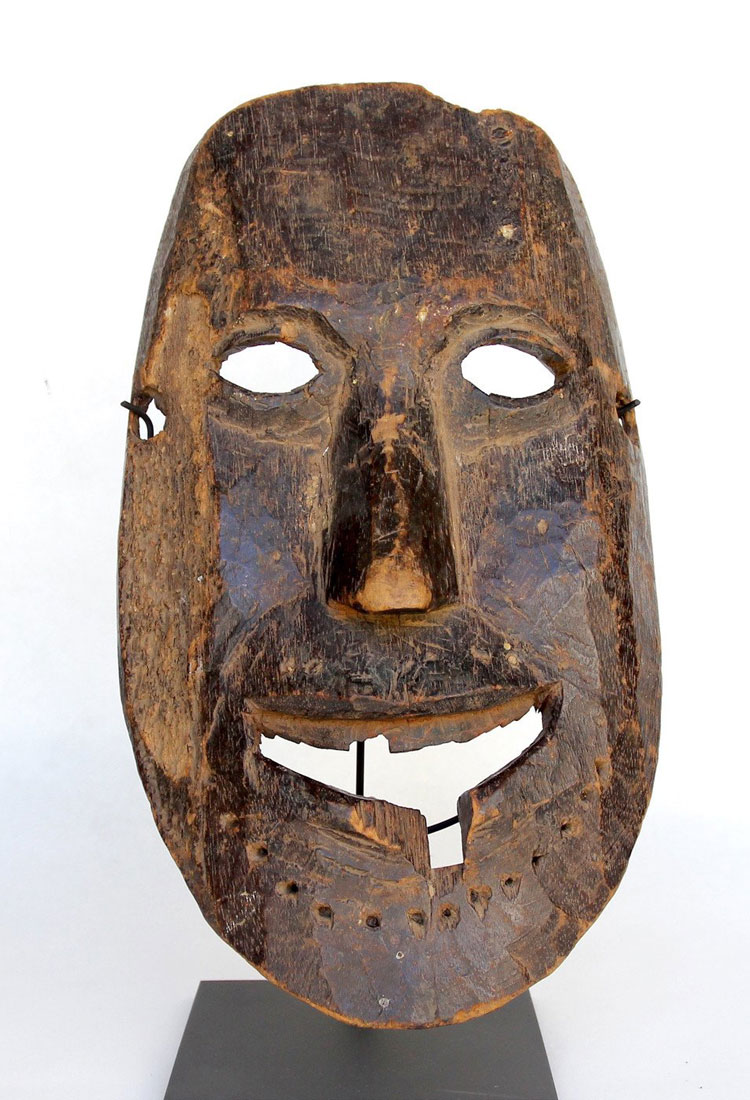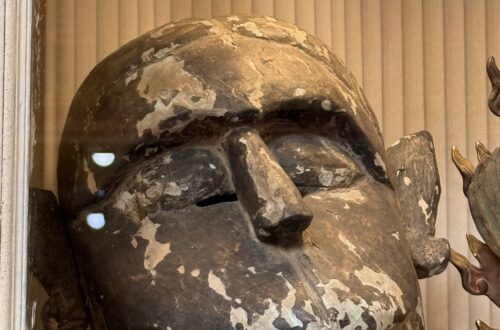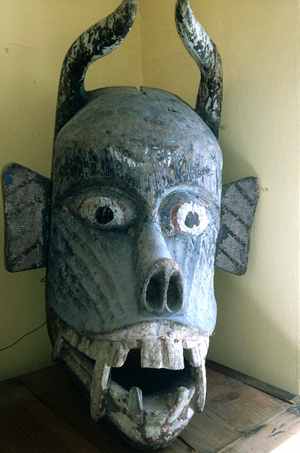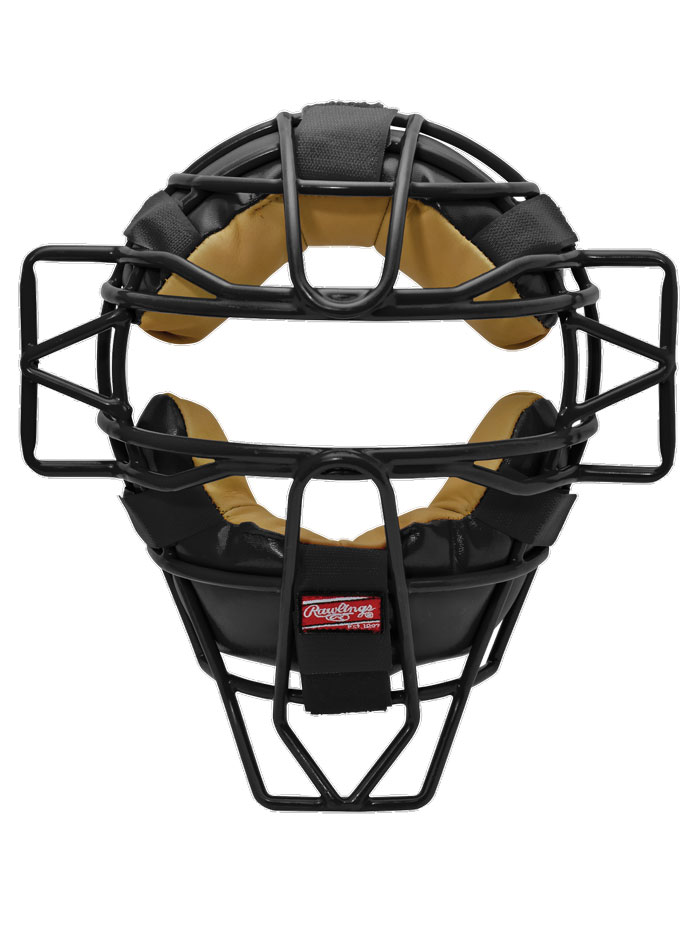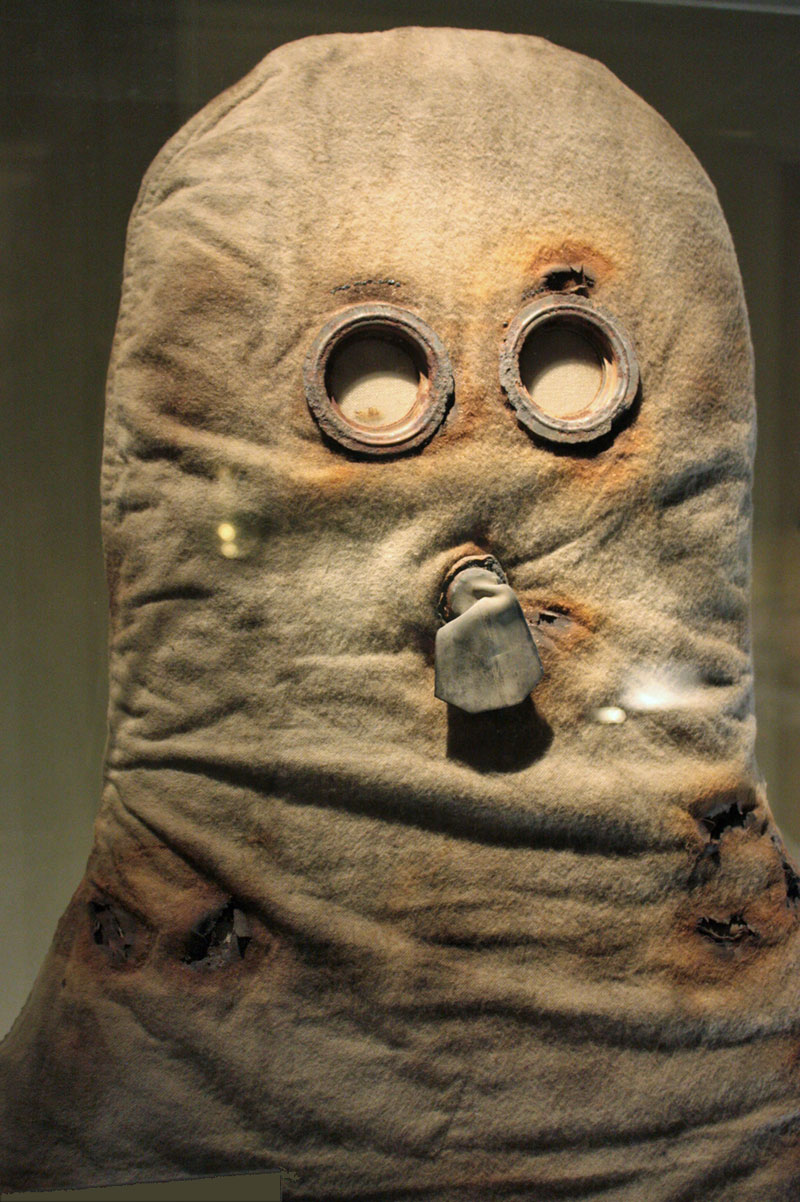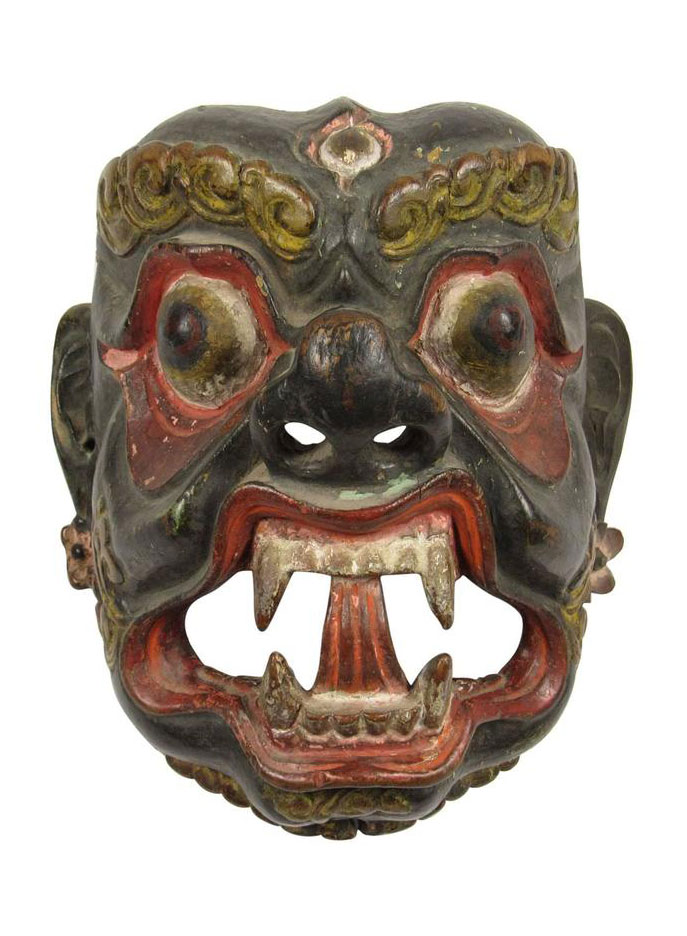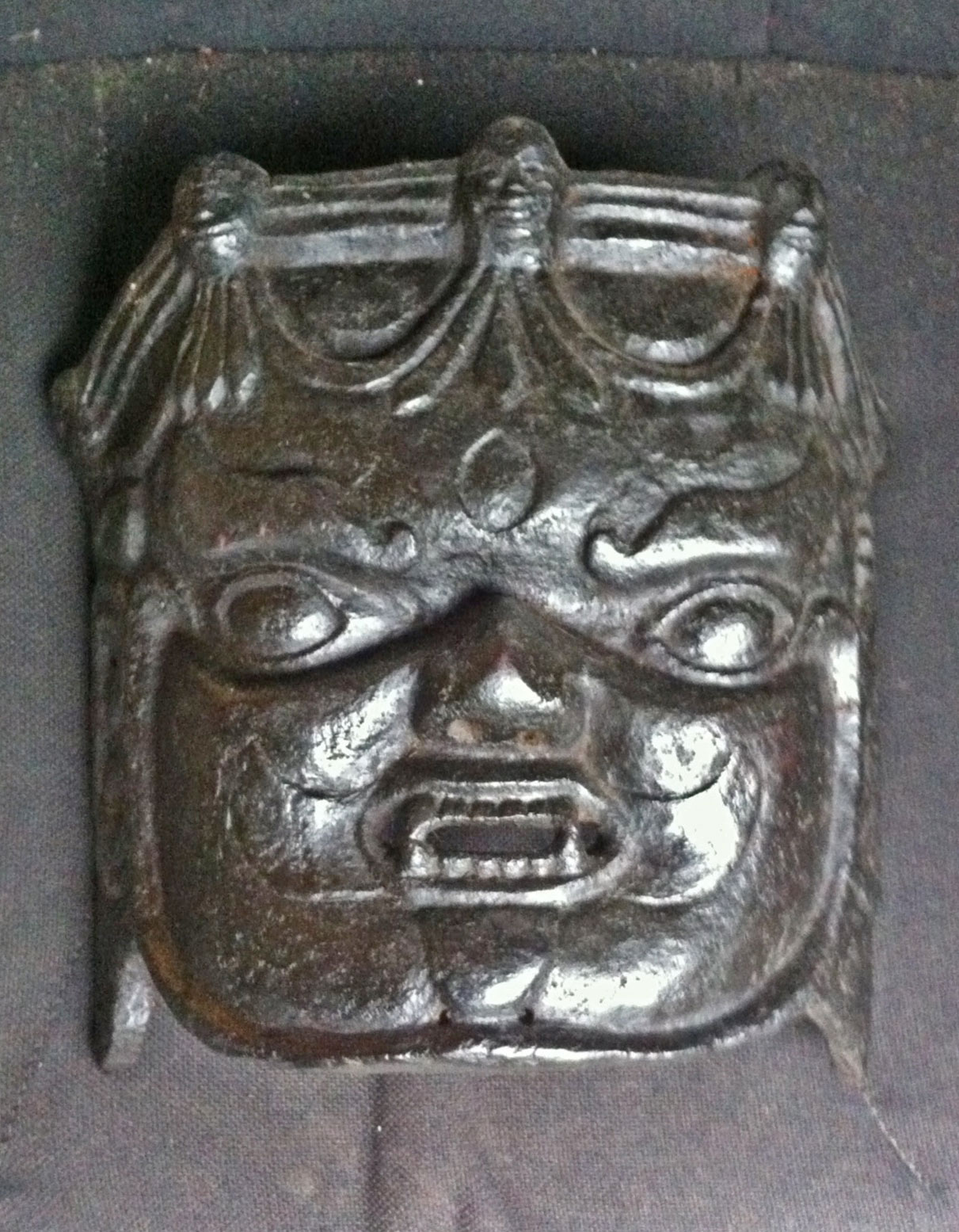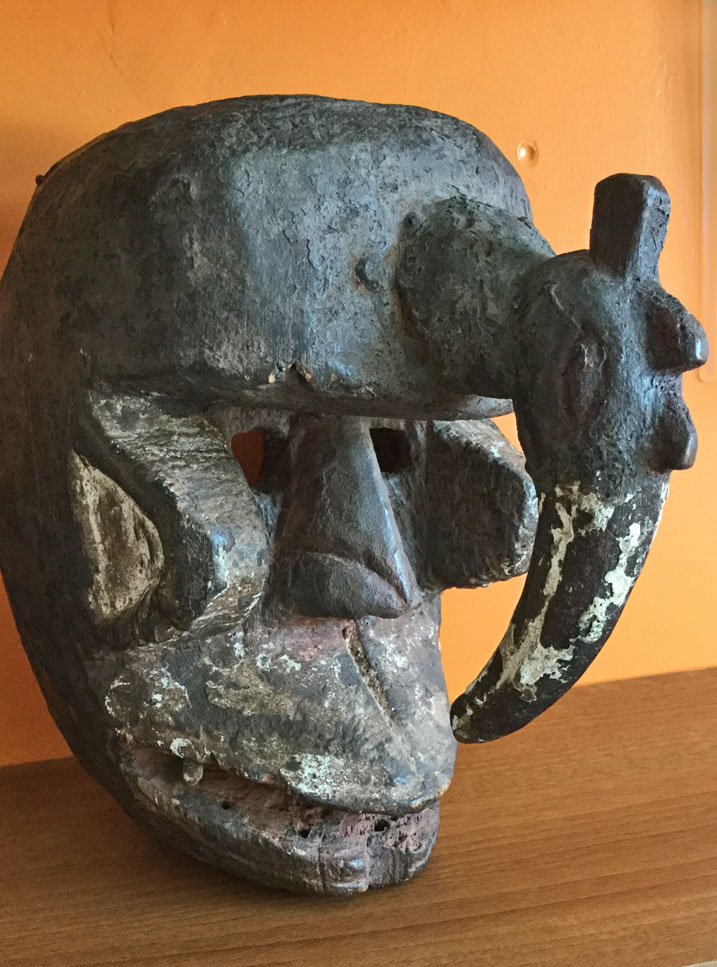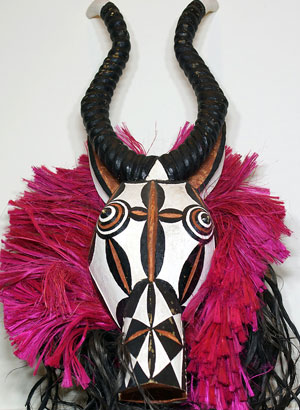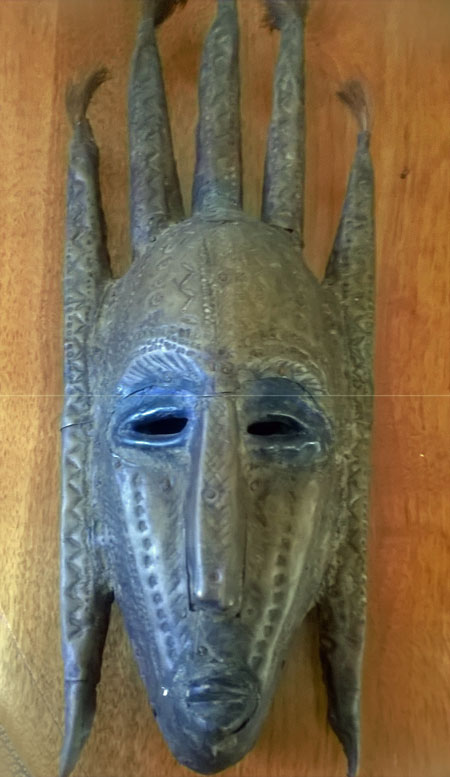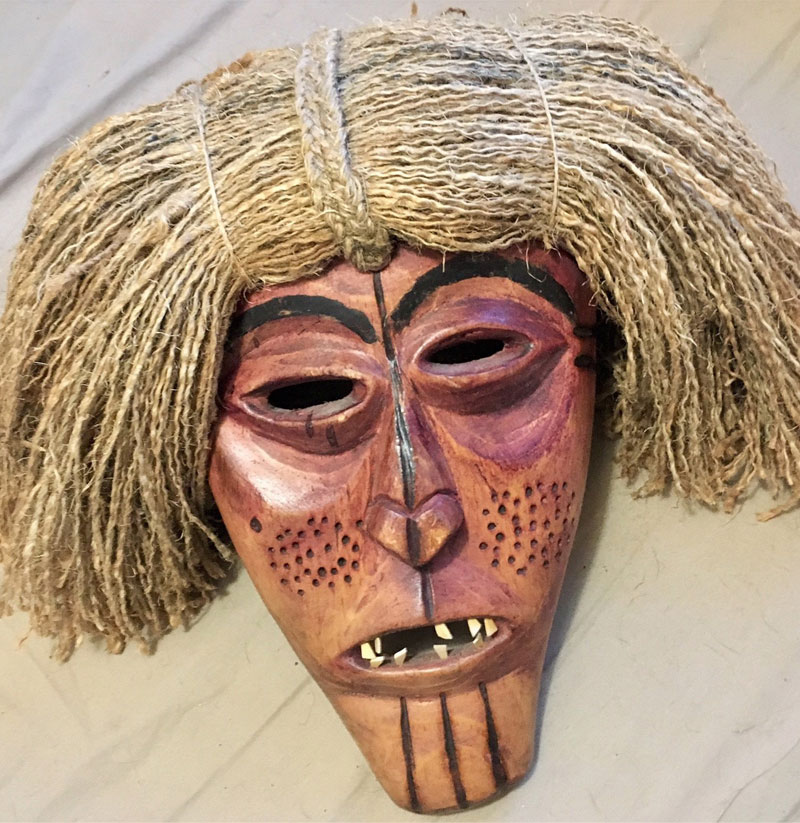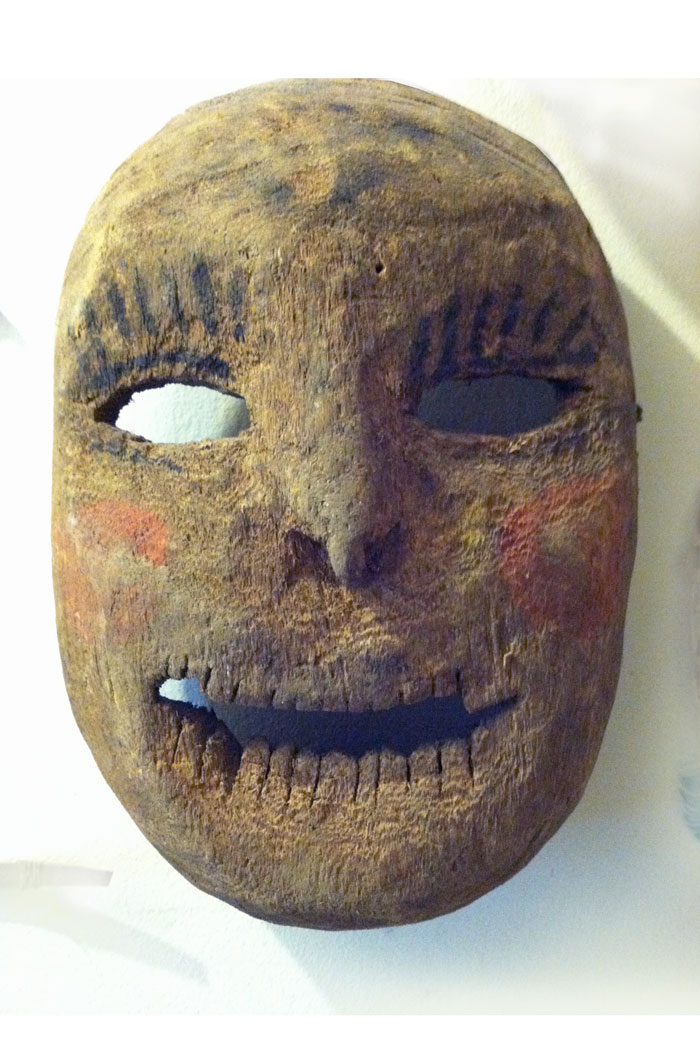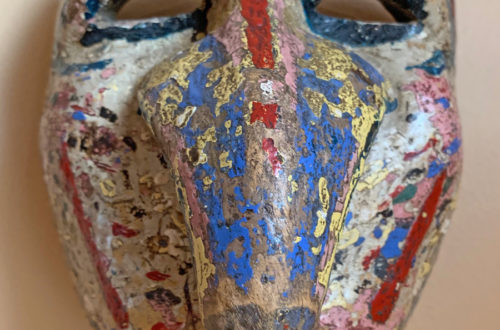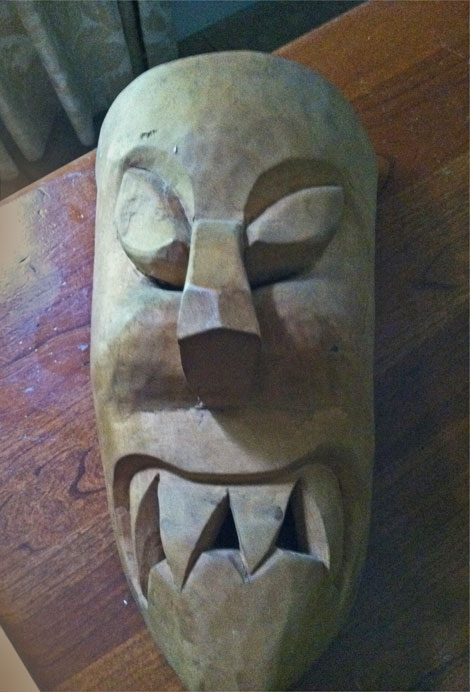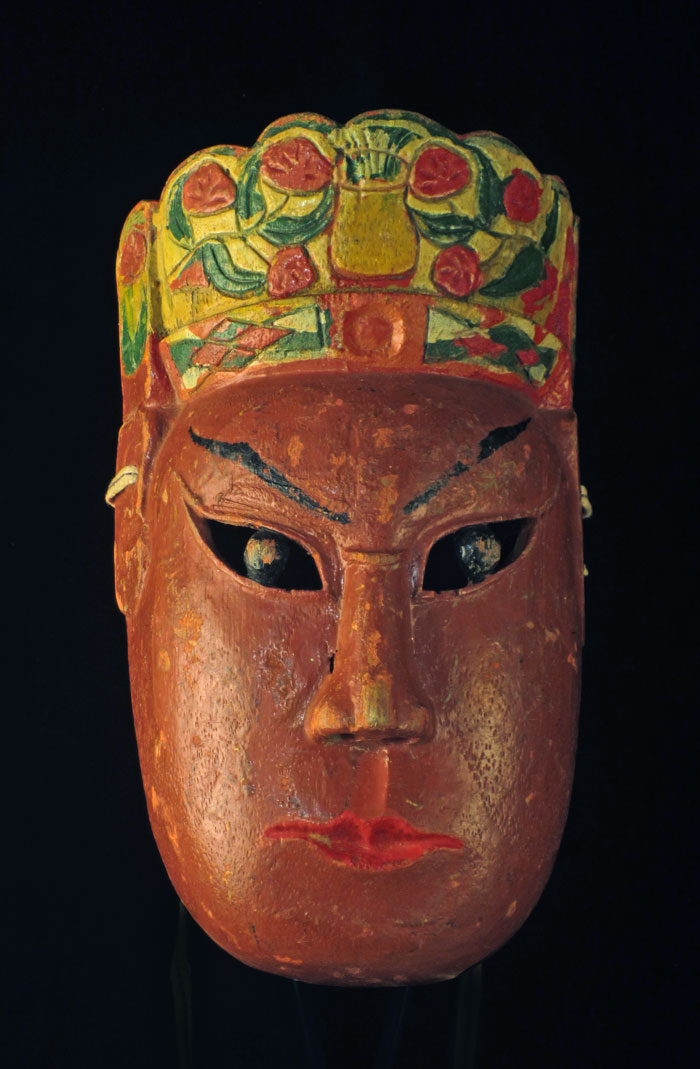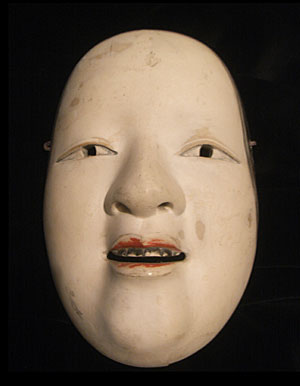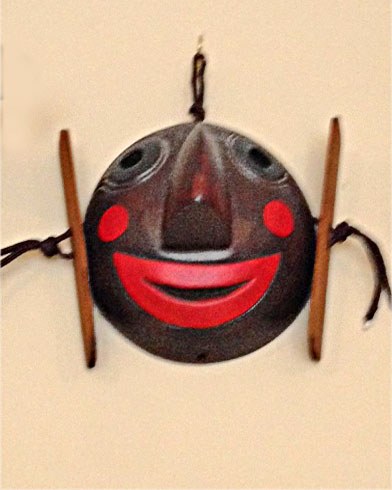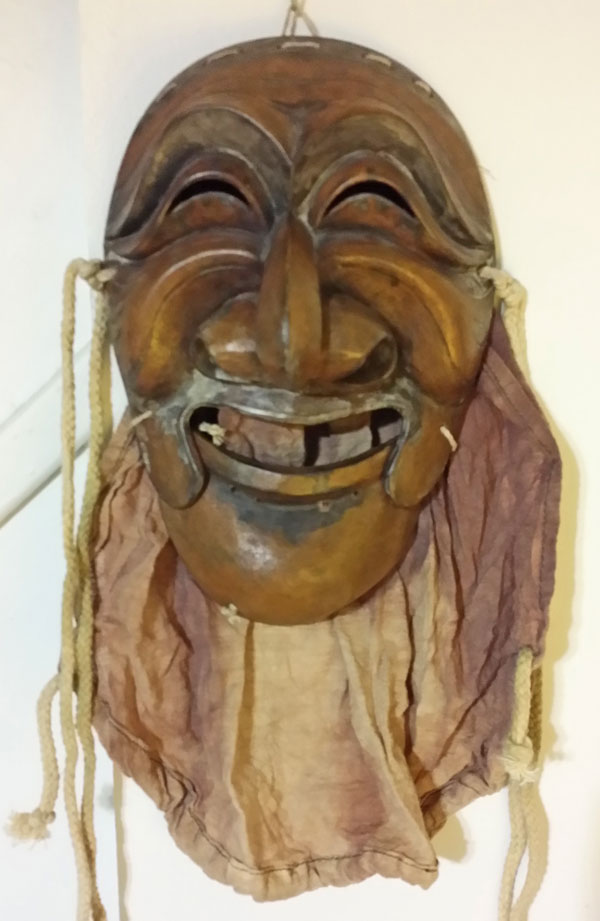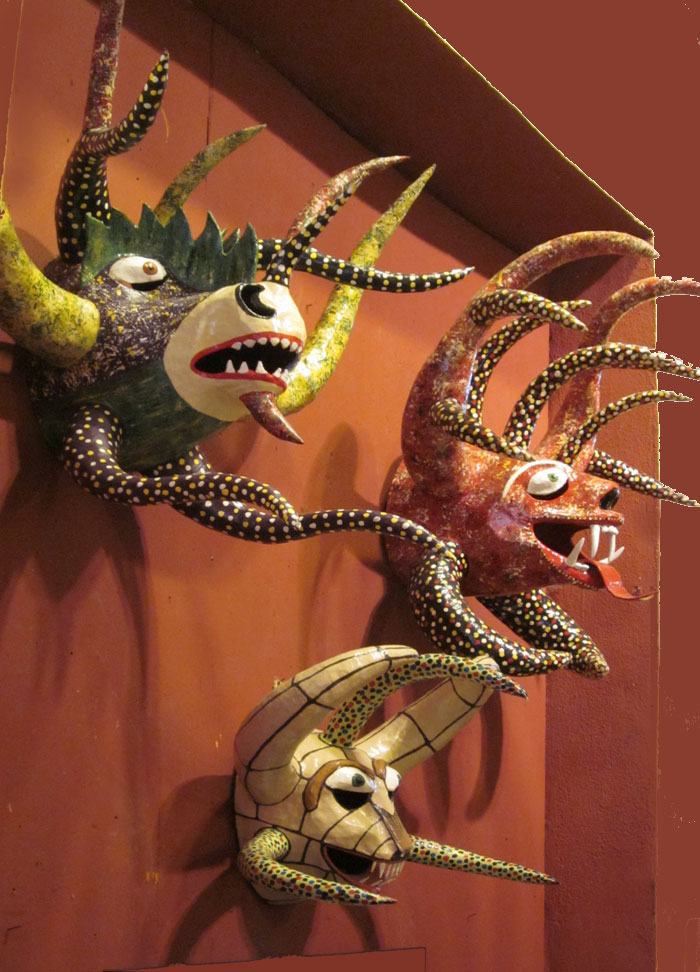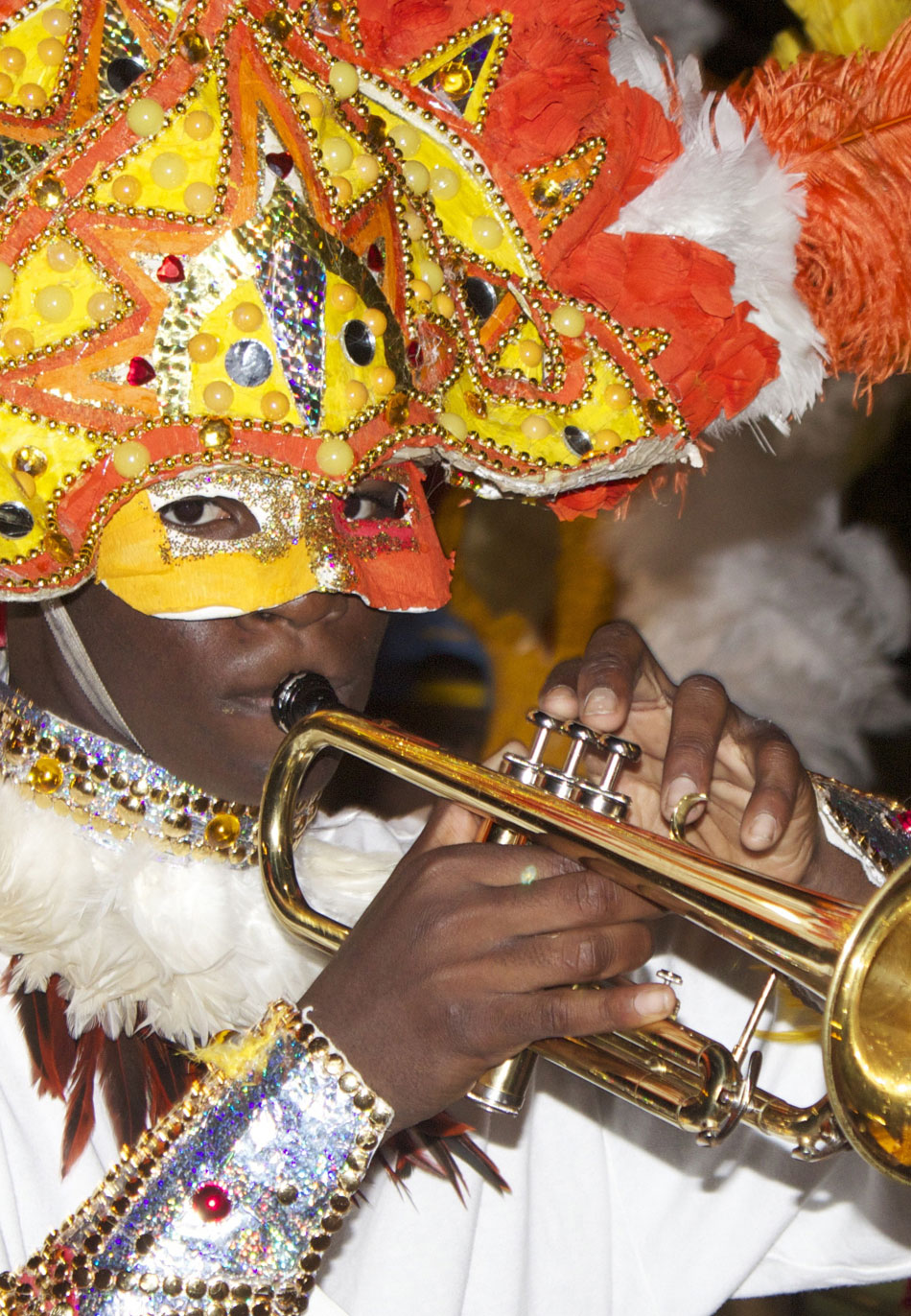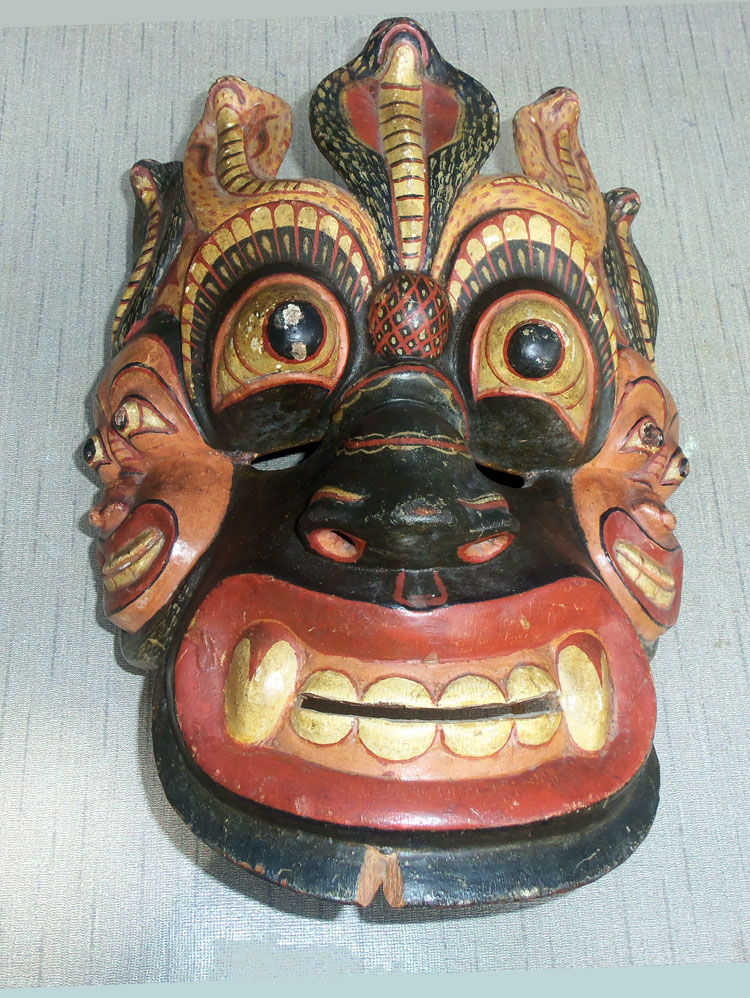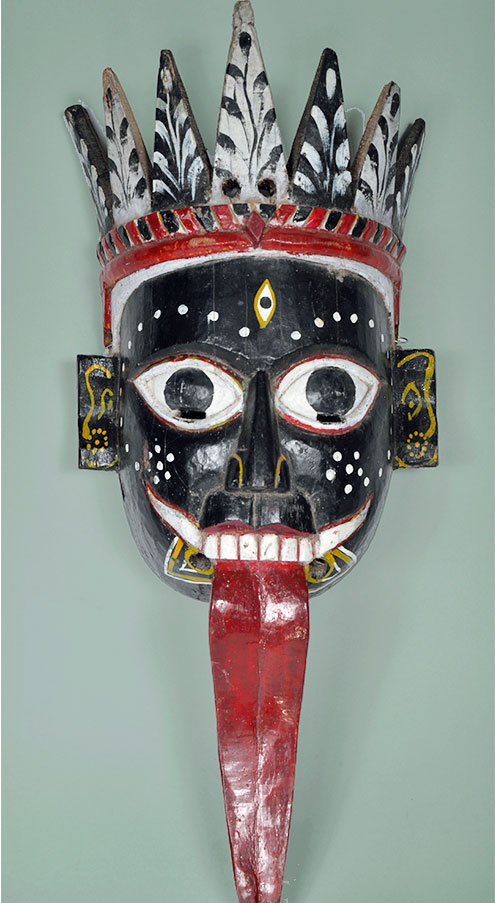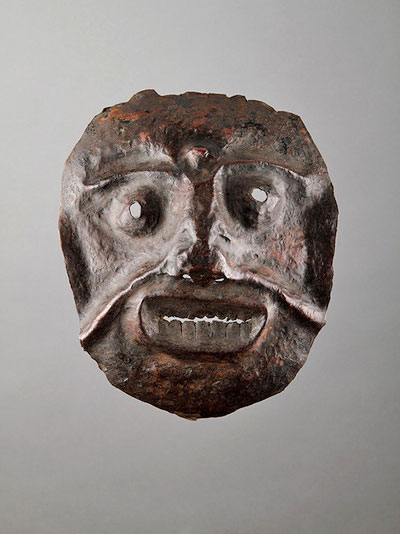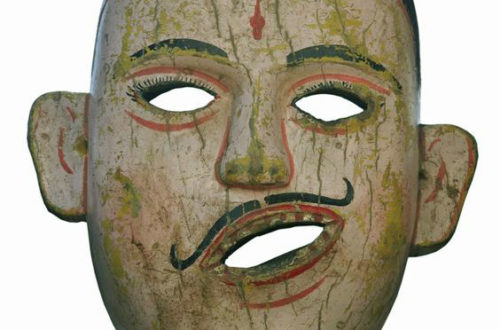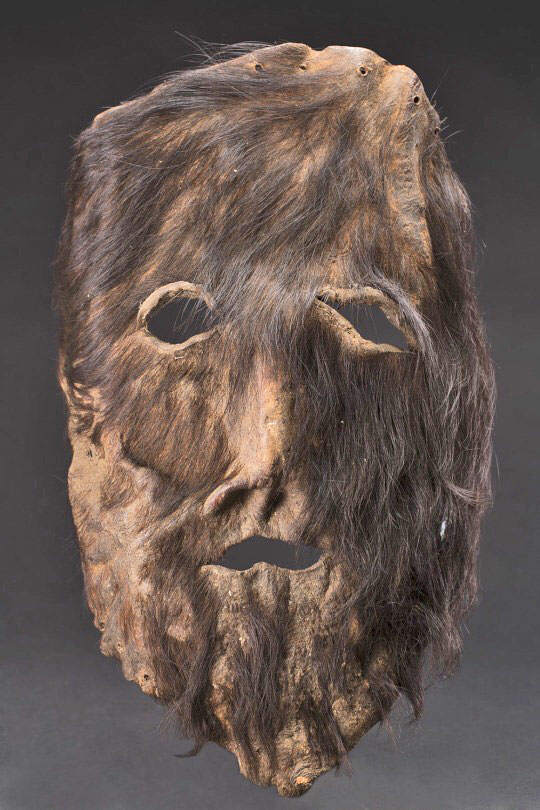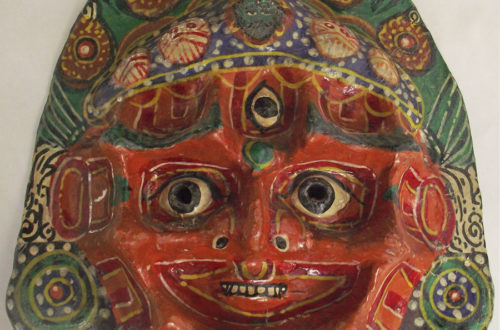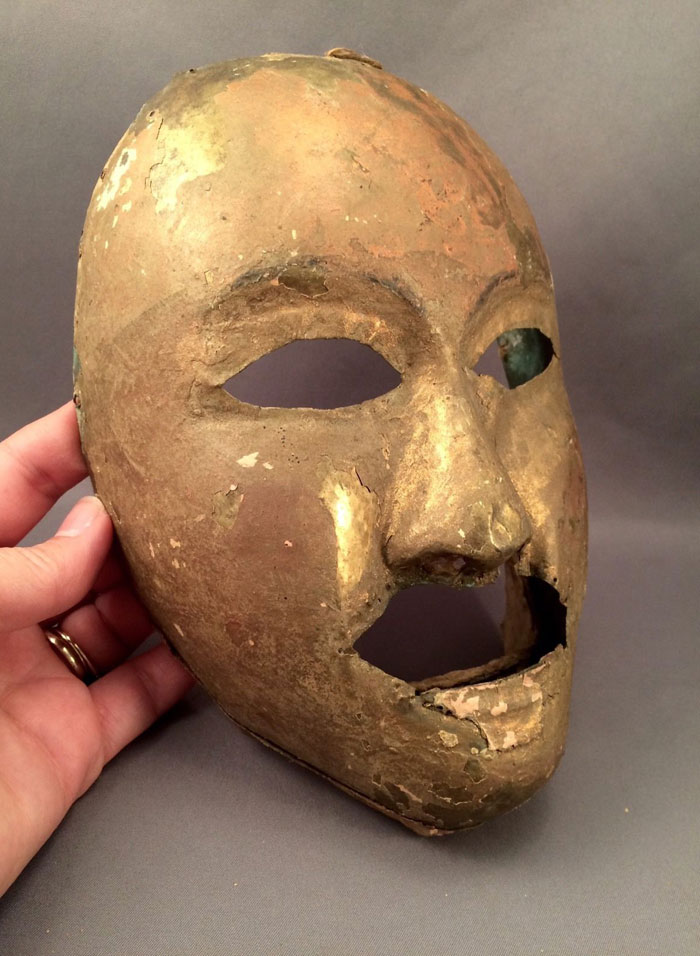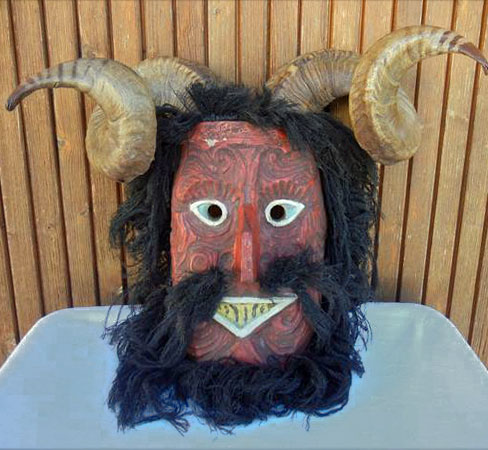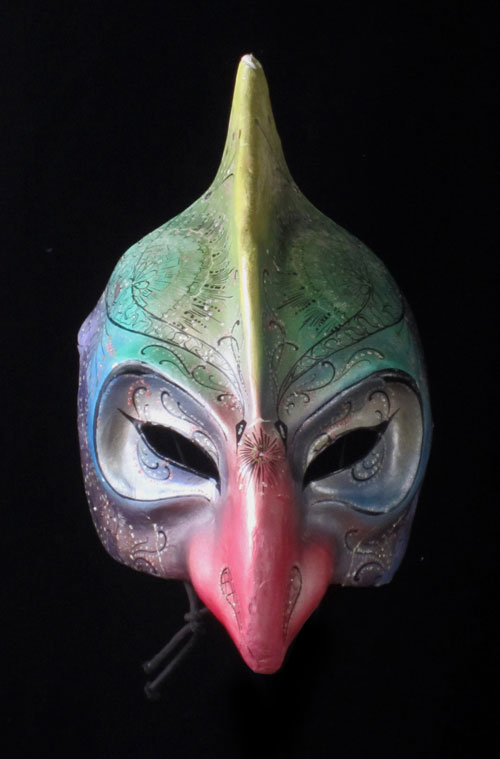A few days ago I posted a very nice Buddhist demon mask from Nepal. Here is one from a tribal group that resides in the Middle Hills region of rural Nepal and is much different. It would be used for shamanistic purposes and is carved in a primitive way. Paint is rarely used, and because it is stored hanging from the ceiling of a smoke-filled hut, has turned a greasy, dark brown. Even though it is very crude, masks like this have a strong appeal. There are several books on masks from the Middle Hills. Part of the charm of this mask is the way it has aged. Please enlarge…
-
-
Labor Day surprise
For those of you from countries where baseball is not played, this is a catcher’s mask. It protects the player’s face from a missed, fast-moving hardball. It is a true mask– not a tourist’s souvenir. I love protective masks for their beauty. As Louis Sullivan said, form follows function. Please check out the category called “Protection” to see others. They are all excellent designs. There are many others from different occupations and sports. Most of them can look great on the wall or a stand. You might want to consider getting a beautiful book called Masks by Nunley & McCarty. It contains ethnographic masks from all over the world, plus…
-
Himalayan demon mask
Q: What are you thoughts? Remind us what the red-wax seal means? It cleared Tibetan customs, right? But beyond that, do we know when they started and stopped using this type of seal? Was this seal essentially put onto everything? (i.e. a real antique and a tourist piece would both be given one of these?) Nate, 1209 A: Let me start with the red wax seal. The Nepalese customs department began taxing folk art items being sold to tourists and exporters in the middle 20th century. Masks got a seal on the rear. Then, around the beginning of the 21st, they stopped wasting time and money on this practice. I…
-
Guere mask with bird
Q: Have you any idea which tribe this mask is from? Derek, 1208 A: I’m calling it a Guere. It might also come from the Kran, Wobe or We. These tribes occupy Ivory Coast and Eastern Liberia. You could search for images of them all and will probably not find a mask with a bird sticking out of its forehead. I think it is very collectible for this reason. Whether it is as old and used as it looks remains to be seen. C Save Save Save
-
Mexican homemade mask
Q: I bought this mask many years ago at a folk art store in Denver, CO, which was going out of business. They had very little info on it, except to say they thought it was called “Huasteca” and was from Mexico. I have tried to research it…to no avail. Made of very light wood and has blushing cheeks. Could you give me more details about this mask? I’d appreciate it. Mickey, 1207 A: Homemade masks can come from almost anywhere in Mexico, not just the Huasteca region of Hidalgo. Many Mexicans are so poor they can’t afford to buy from a local mask maker. Some of these amateurs are…
-
Nuo mask from Guangxi, China
When we started writing Masks of the World about four years ago, we said on page 50 of the East Asia chapter the following (slightly revised). From the Maonan ethnic group living in the remote Guangxi Province, this is a well-used Nuo character mask. Nuo is an old name for exorcism ceremonies meant to drive off pestilence, disease and death. These ceremonies eventually evolved into dances, and later into operas. The Maonans have always been farmers, but times have been changing rapidly in the People’s Republic. Urbanization seems to be ending much of the folk art traditions. Masks like this one, repainted several times and now exhibiting a nicely worn…
-
3 Vejigantes from Puerto Rico
I just found this photo of three papier mache masks which are worn by Puerto Rican marchers at carnival time. They are decorated differently and obviously made by the same guy. You can see more typical Vejigantes by going to the Caribbean Category on this site. I live in downtown Lancaster, PA, which has a large population of Puerto Ricans living within walking distance of me, but these three masks were photographed on the island… a great place for masquerade. 1205
-
From an island off the tip of India
Q: Went to a church Thrift Shop last week and they were having a half off sale on the “artwork”. Bought three Indonesian Masks for $20.00! The two smaller ones have real animal tusks (seven each mask)held to the masks with old finishing type nails, the ears attached the same way. Guessing they are definitely tourist-type masks. The largest mask is 10″ wide by 14 1/2″ high and is a one piece carving. Five cobras make up the top of the headdress and the ears are human heads. On the back appear to be missing attachments for the wearer for a head strap, also one hole through the top.…
-
Hairy leather mask
Q: Here is a mask that I think is from Nepal. Can you tell me more about it? Hans, 1203 A: Masks made of hairy animal skin do show up occasionally in Nepal, Tibet, and even parts of Europe. I want to put this one on the blog because it projects so much character and, dare I say it, Satanic Power! Hopefully one of our viewers will add a comment.
-
Old Venetian carnival mask
Q: I am sending you pictures of a couple of painted light metal (possibly tole). I believe these could be 18th century Venetian masks.They remind me of the “Volto” type, just the mouth here is open. Do you have any information that could help? Nicola, 1202 A: Your research is correct. It is an old Volto character from the traditional Venetian masquerade. It is the most common style and can be seen at many parties around the Western world. Other Venetian mask characters would be the Bauta, Colombina, Plague Doctor, Pantalone, etc. I think both of your Voltos are very collectible. It sure would be nice to know when and…
